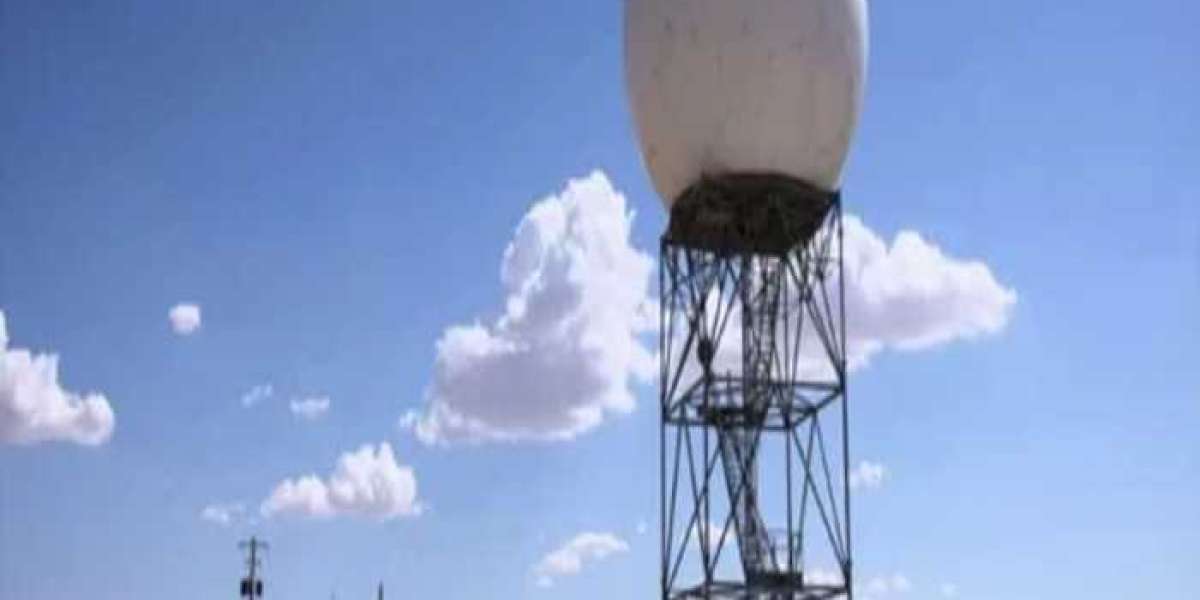How It Works
Weather radar, also known as weather surveillance radar (WSR), is an essential tool that uses pulsed radar signals to detect precipitation, atmospheric turbulence and other meteorological parameters. Radar works by emitting electromagnetic waves that reflect off targets like rain droplets, snowflakes or hail. The reflected signals are then detected by the radar antenna and computer-processed to determine characteristics of the target like size, location and motion. Modern radar systems are able to detect rain and storms from several hundred kilometers away with high resolution of 1-10 kilometers. This makes radar valuable for monitoring developing weather patterns in real-time.
Utility of Weather Radar for Businesses
Weather Radar provides invaluable benefits for businesses in planning operations and minimizing weather-related risks. Farmers and agriculture dependent businesses rely on radar to schedule field work, irrigation and monitor crops for hail damage. Transportation and logistics companies use radar to plan routes, dispatch crews and schedule deliveries around approaching storms. Energy companies use radar to position repair crews in anticipation of power outages from high winds or snowfall. Manufacturing and construction firms depend on radar to schedule outdoor work and avoid delays from inclement weather. Aviation, maritime and other sectors involved in moving goods also benefit greatly from accurate weather forecasts supported by radar data.
Advance Warning of Severe Storms
One of the most important uses of weather radar is providing advance warning of severe thunderstorms, tornadoes, hail storms and flash floods. Modern Doppler radar is able to detect developing rotation within thunderstorms indicating a possible tornado formation even before it touches down. This gives communities and emergency managers precious minutes to sound tornado sirens and direct people to safe shelters. Businesses utilize these tornado warnings in safeguarding employees, securing work sites and preventing property damage. Radar also helps forecast hail core locations to issue timely advisories helping reduce insured losses for many industries.
Monitoring Storm Systems
Weather radar allows continuous monitoring of storm systems to track their movement, size and intensity in real-time. As storms approach a region, radar imagery assists emergency planners and dispatchers allocate response assets appropriately. It helps utility and telecom companies position restoration crews in paths of powerful winds and downbursts. Tracking a major winter storm with radar aids decisions on closing schools and offices, cancelling flights ahead of blizzard conditions or heavy snowfall. This storm tracking reduces business disruption costs from unanticipated weather events. High resolution radar also helps distinguish rainfall rate variations within a storm helping prioritize drainage clearing.
Quantitative Precipitation Estimates
Advanced weather radar goes beyond detecting rain areas to provide quantitative precipitation estimates (QPE). QPE algorithms use the reflectivity or brightness readings from radar pulses bouncing off rain droplets to determine rainfall rates and totals. This data is useful for hydrologists in flood forecasting and managing reservoir releases. QPE informs decisions on drainage upgrades in areas prone to flash floods. It assists mining, construction, real estate and other outdoor businesses undertake work only after intense downpours abate. Agriculture, insurance and utilities sectors rely on QPE for assessing crop and property losses from major storms.
Doppler Weather Surveillance
Doppler radar goes one step further by detecting the motion of hydrometeors or water droplets towards and away from the radar antenna. This Doppler velocity data is invaluable for detecting rotation within thunderstorms indicating tornado threats. It also derives wind velocity fields around storms assisting aviation and maritime operations. Doppler radar winds help grid operators anticipate damage to power lines from high winds. Doppler surveillance detects microbursts posing aviation hazards on approach paths. Advanced dual polarization technology augments Doppler with insights on hail core locations, snow water content and improving QPE especially in heavy rain and snowfall.
Economic Impact Analysis
Weather radar provides the high-resolution local data needed for modeling economic impacts from storms, flooding, drought and other climate extremes. This supports risk assessments and business continuity planning for industries across sectors. Radar-enabled nowcasting helps predict commute disruptions from flash floods or storms, aiding adjustments to operations and workforce scheduling. Detailed damage mapping from radar-observed storms aids insurance claims processing and damage reimbursements. Overall, it serves as a critical tool sustaining business continuity amid disruptions from naturally varying weather conditions. Its economic value will further increase as new radar technologies provide ever sharper views of developing hazardous weather.
In the weather radar systems have become indispensable tools enabling businesses to plan operations and minimize risks from rapidly changing weather conditions. Advanced radar technologies provide valuable data for forecasting, monitoring storms, assessing impacts and sustaining commerce across sectors in challenging weather environments. As climate threats intensify, it will remain a vital asset safeguarding lives, properties and livelihoods dependent on accurate real-time monitoring of precipitation and atmospheric dynamics.
Get more insights on, Weather Radar
Explore More Related Article On- Portable Beds Market
For Deeper Insights, Find the Report in the Language that You want.
About Author:
Ravina Pandya, Content Writer, has a strong foothold in the market research industry. She specializes in writing well-researched articles from different industries, including food and beverages, information and technology, healthcare, chemical and materials, etc. (https://www.linkedin.com/in/ravina-pandya-1a3984191)














